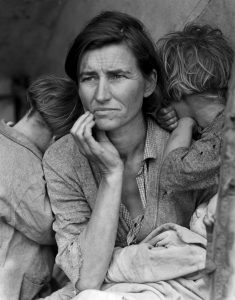Much of Louise Erdrich’s poetry surrounds the depiction of her Native American upbringing. The poem, “I Was Sleeping Where the Black Oaks Move”, tells the story of a flood destroying her home and the surrounding land as she and her grandfather watch. It is also understood as an allusion to Manifest Destiny and the cultural whitewashing of the Native people during colonial America. Erdrich describes this destruction through aggressive terminology like “dragged”, “hollow”, and “broken”. Additionally, there are multiple mentions of the color “white”, directly referencing the racial transition of America during that time.
The presence of Erdrich’s grandfather in the poem is strategic in that she herself is too young to have experienced these moments during Manifest Destiny. But based on the Native American tradition of oral history passed down through generations, it is presumed that her grandfather had shared these stories with her.
After the wave of Manifest Destiny and the violent relocation of Natives, America experienced the Great Depression. “Migrant Mother”, a photograph by Dorothea Lange, is arguably one of the most famous pieces of artwork from this time. It depicts a mother in her 30’s, distractedly looking in the distance as her children hold onto her shoulders and back for protection; she is covered in dirt.
Lange quotes the mother saying:
“We just existed,” Florence Thompson said. “We survived. Let’s put it that way.”
Thompson had been working as a pea picker in California when the crops had been destroyed by freezing rain, leaving the entire camp unemployed. She was a single mother, who had to feed her children by selling the tires off her car and killing birds.
Both pieces of art describe the struggle of living through the depiction of a disaster, from two completely different races. Additionally, they are comparatively ironic because the land that destroyed Thompson’s livelihood is also the land that had been stolen from the Native Americans like Erdrich.
The presentation of the pieces of art are an interesting focal point, as well. As mentioned above, Native American communities largely operate based on oral history and storytelling collectives for a means of documentation. White Americans largely utilize photography and other still life “moments in time” methods. These two pieces of art, the poem and the photo, both depict an intense struggle and search for livelihood, but in two completely different ways.
Through their art, both Erdrich and Lange tell the story of “just existing”, as Thompson put it. They discuss how these unpreventable events in their lives had come through, destroying everything in their paths, only to leave behind the aftermath. They simply survived, rather than prospering.
